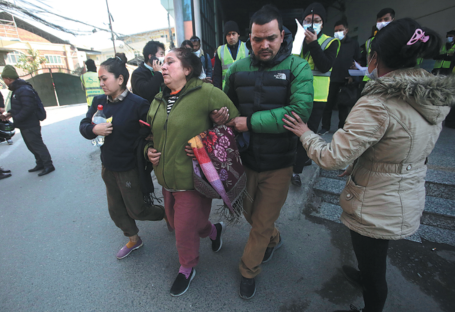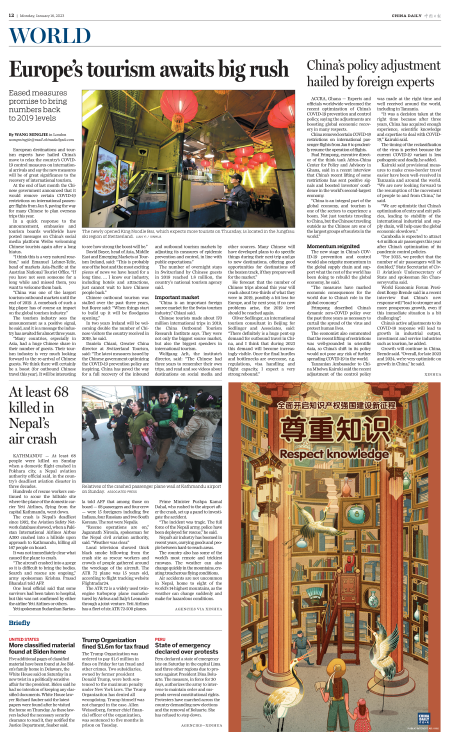
Relatives of the crashed passenger plane wail at Kathmandu airport on Sunday.
KATHMANDU — At least 68 people were killed on Sunday when a domestic flight crashed in Pokhara city, a Nepal aviation authority official said, in the country's deadliest aviation disaster in three decades.
Hundreds of rescue workers continued to scour the hillside site where the plane of the domestic carrier Yeti Airlines, flying from the capital Kathmandu, went down.
The crash is Nepal's deadliest since 1992, the Aviation Safety Network database showed, when a Pakistan International Airlines Airbus A300 crashed into a hillside upon approach to Kathmandu, killing all 167 people on board.
It was not immediately clear what caused the plane to crash.
"The aircraft crashed into a gorge so it is difficult to bring the bodies. Search and rescue are ongoing," army spokesman Krishna Prasad Bhandari told AFP.
One local official said that some survivors had been taken to hospital, but this was not confirmed by either the airline Yeti Airlines or others.
Yeti spokesman Sudarshan Bartaula told AFP that among those on board — 68 passengers and four crew — were 15 foreigners including five Indians, four Russians and two South Koreans. The rest were Nepalis.
"Rescue operations are on," Jagannath Niroula, spokesman for the Nepal civil aviation authority, said. "Weather was clear."
Local television showed thick black smoke billowing from the crash site as rescue workers and crowds of people gathered around the wreckage of the aircraft. The ATR 72 plane was 15 years old, according to flight tracking website Flightradar24.
The ATR 72 is a widely used twin-engine turboprop plane manufactured by Airbus and Italy's Leonardo through a joint venture. Yeti Airlines has a fleet of six ATR 72-500 planes.
Prime Minister Pushpa Kamal Dahal, who rushed to the airport after the crash, set up a panel to investigate the accident.
"The incident was tragic. The full force of the Nepali army, police have been deployed for rescue," he said.
Nepal's air industry has boomed in recent years, carrying goods and people between hard-to-reach areas.
The country also has some of the world's most remote and trickiest runways. The weather can also change quickly in the mountains, creating treacherous flying conditions.
Air accidents are not uncommon in Nepal, home to eight of the world's 14 highest mountains, as the weather can change suddenly and make for hazardous conditions.

